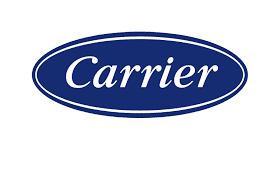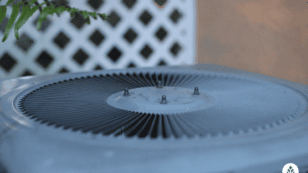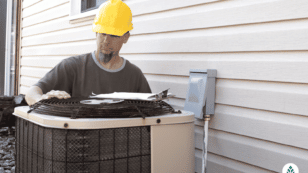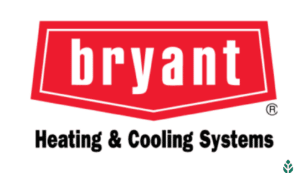
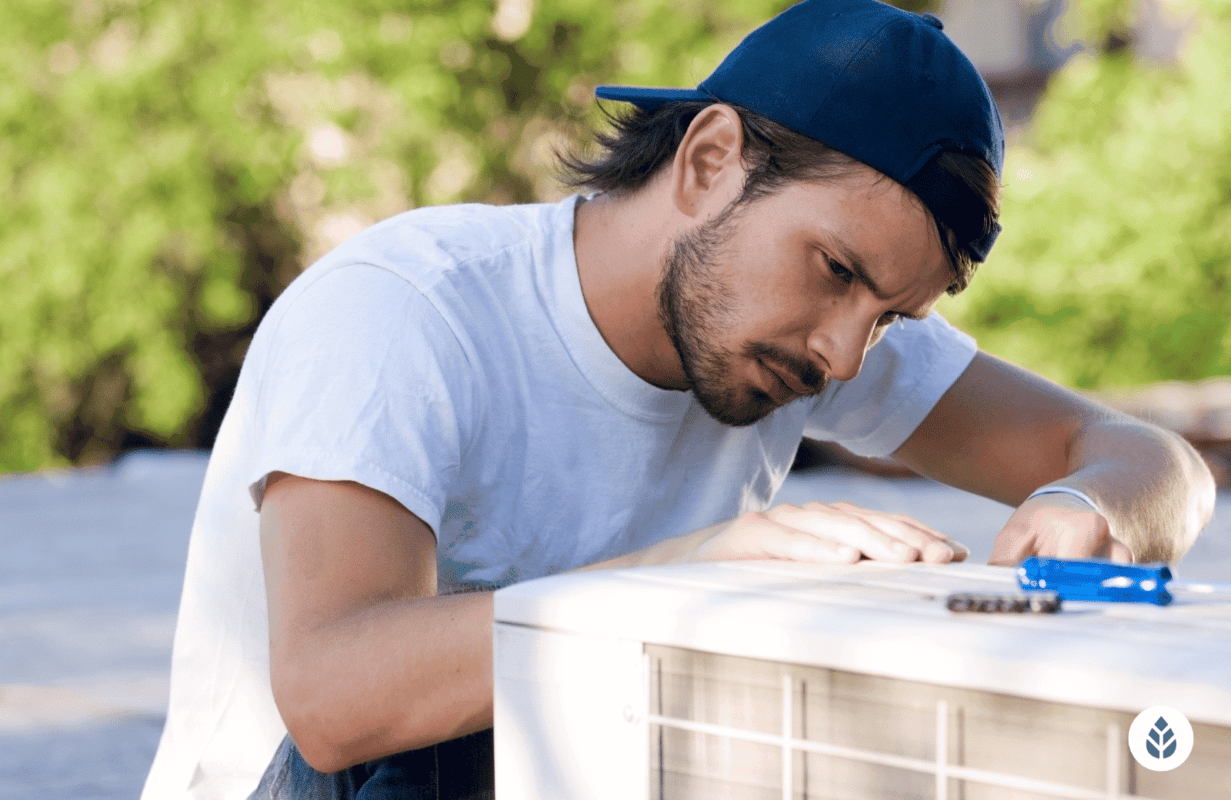
Cost of New HVAC System Replacement & Installation (2024)
Your HVAC system is one of the most important components of your home. Its job is to keep you comfortable year-round, and replacing your HVAC can often be costly and daunting to homeowners. If your system does break, it doesn’t have to be the end of the world, but preparing for how much it will cost you and how you can mitigate those costs is important.
Each product and or company featured here has been independently selected by the writer. You can learn more about our review methodology here. If you make a purchase using the links included, we may earn commission.
A heating, ventilation and air conditioning (HVAC) system is vital to every home, as it not only controls the temperature, but also protects you and your home from dust and mold. If your HVAC system isn’t operating properly, it’s important to replace or repair it as soon as possible.
The average HVAC replacement costs between $5,000 and $10,000, with the national average cost around $7,000.
If your HVAC system is less than 10 years old, well-maintained and has been functioning properly, you may be able to repair it if there’s a problem. But if it doesn’t fall within those parameters, it’s likely time to replace it.
What Is an HVAC System?
To better understand the cost of replacing an HVAC system, let’s quickly explain its function.
HVAC equipment refers to any system that provides the following three functions for an indoor space:
- Heating
- Ventilation
- Air conditioning
Occasionally, HVAC includes an “R” (HVAC-R or HVAC/R) for refrigeration, but that typically only applies in the case of large commercial spaces with refrigeration.
HVAC Unit Replacement Cost Factors
Whether you need a new HVAC installation or to replace an existing system, there are a few considerations that go into HVAC unit prices.
Type of HVAC Unit
The national average cost for a new HVAC unit is $7,000, but price will vary greatly depending on which type of HVAC unit you install.
There are multiple options for home heating and cooling, including combination electric furnace and AC units, boiler and cooling systems, heat pumps, mini-split heat pumps and more.
We’ll dive into the cost of HVAC installation based on type a little further down.
Labor Involved for Installation
Labor costs for HVAC installation typically run between $500 to $2,500 depending on the type of system and difficulty of installation.
For example, geothermal heat pumps require extensive labor and underground excavation to place the piping, which can take an HVAC contractor between six and 10 hours. If new ductwork is needed, the job could take an extra one to three days.
Prices can also fluctuate depending on which HVAC company you choose for the installation, and some may charge extra for travel costs if you’re not close to their headquarters. That’s why we always recommend getting multiple quotes and having an HVAC cost estimator come to inspect your property if possible.
Removal and Disposal of Existing unit
When speaking with your HVAC contractor about a replacement, be sure to ask if having your failed HVAC unit removed and disposed of is included in the total cost estimate. If not, you may have to pay extra to have it removed or disposed of properly.
Ease of Accessibility to Existing Unit
If your current HVAC system is hard to reach or requires a relatively involved removal process, those costs will likely be added to the total HVAC replacement cost.

ARS Rescue Rooter
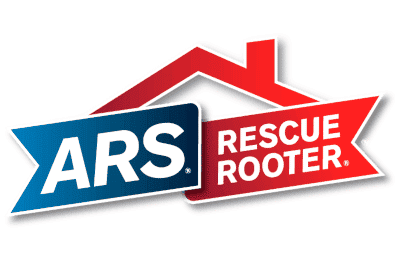
Regional Service
Average cost
Pros
- Focus on energy efficiency
- Positive customer reviews
- 15+ years in business
- Outstanding social impact
- Strong warranty
- Offers eco-home systems (heat pumps, solar, etc)
- Financing options available
Cons
- Available in fewer than 25 states

Service Experts Heating

Regional Service
Average cost
Pros
- Wide availability (25+ states)
- Positive customer reviews
- 15+ years in business
- Outstanding social impact
- Strong warranty
- Offers eco-home systems (heat pumps, solar, etc)
- Offers money-saving membership programs
Cons
- No emergency service

Michael & Son

Local Service
Average cost
Pros
- Variety of services offered
- Positive customer reviews
- 15+ years in business
- Outstanding social impact
- Offers money-saving membership programs
- Financing options available
Cons
- Only available in 1-3 states
Pricing by Type of HVAC System
As mentioned above, the total cost of your HVAC replacement will vary greatly depending on what type of HVAC system you’re having installed, as well as the size of your system and the size of your home.
For example, a window air conditioning unit can cost anywhere from $150 to $750 and can be easily installed by a handyperson or as a DIY project. But a central air conditioning system can cost anywhere from $1,000 to $5,000, plus another several thousand dollars for the professional installation.
Full Installation With Extras: $10,000 to $17,000
If you’re having a full HVAC replacement with extra features, expect a costly installation totaling between $10,000 and $17,000. This type of installation typically takes between three and seven days to complete depending on the size of your home and scope of your home improvement project.
Extra features may include a zoning system, which can cost between $2,000 and $4,000, and other add-ons such as UV lighting, a programmable thermostat, a whole-house humidifier or an energy recovery ventilator. If asbestos is found in your home, you’ll need to hire a professional asbestos removal company to remove it, which can cost an extra $500 to $1,000.
Full Installation With Ductwork: $5,000 to $13,000
A full HVAC installation with ductwork typically costs between $5,000 and $13,000 and can take between three and five days to complete.
It’s always wise to replace the ductwork at the same time as your HVAC system, as they tend to have a similar lifespan of 10 to 20 years. Additionally, having new ductwork installed can help lower your energy bills and improve energy efficiency.
Change-Out: $4,000 to $10,000
If your ductwork is still in good condition and you just need a new unit, you may be able to get a change-out HVAC replacement. It involves switching out the major parts of your cooling and/or heating system without having to replace all of the ductwork.
Most HVAC replacements will require new ductwork, so be sure to ask your HVAC contractor to check the condition of your ducts (unless you have an HVAC system that doesn’t require ductwork, like a ductless mini-split system).
A change-out HVAC replacement costs between $4,000 and $10,000 and takes between one and three days to complete, depending on the type of installation.
5 Ways to Save Money on an HVAC Replacement
HVAC unit costs can quickly pile up, especially if you have a lot of square footage to cover. One way to save on HVAC replacement costs is to choose a cheap HVAC unit, but it likely won’t be great quality or have a high efficiency rating.
Fortunately, there are other ways to save money on HVAC replacement services.
1. Do Your Research
Reading this article about average HVAC replacement costs is a great place to start, but you’ll want to do more research specific to the type of HVAC system you want and which HVAC company you choose to go with. Make sure the company has proper licenses and insurance before you allow them to work on your house.
Additionally, check the seasonal energy efficiency ratio (SEER rating) that’s ideal for your circumstances and make sure your HVAC system matches it. A SEER rating is a maximum efficiency rating that’s similar to the miles per gallon for your car. It’s defined as the ratio of the total cooling output of the system over a season (known as British thermal units or BTU).
Higher SEER ratings mean greater energy efficiency. The U.S. Department of Energy mandates specific SEER ratings based on region. The rating will rise to no less than 14 SEER for homes in the Northern U.S. and 15 SEER for homes in the Southern U.S. come 2024.1
Remember, systems with higher SEER may be more expensive, but higher energy efficiency means lower energy costs overall. These higher-rated systems may also mean a higher level of comfort in your home.
2. Get Multiple Quotes
Once you’ve narrowed down a list of trusted HVAC companies, call at least two of them for a quote. HVAC replacement costs can vary greatly depending on the company and some HVAC companies may be able to secure better deals with manufacturers like Goodman, Rheem and Trane.
Also, be sure to ask each company about its warranty, not only for the equipment but for the workmanship as well. You don’t want to be stuck paying for a faulty HVAC installation. Companies that are further away from you may also charge extra for travel.
3. Seasonality
If your HVAC system fails, you may not have a say in the time of year you have to replace it. But if you can avoid purchasing a new system in the middle of summer or winter, you can save money on your installation.
If you don’t have a combined system, AC unit costs are much lower between March and May, while heat and hot air systems are cheaper between August and November. However, exact months may vary depending on weather trends where you live.
4. Use Homeowners Insurance
In some cases, your homeowners insurance will cover the cost of your new HVAC unit. Insurance will cover the cost of a new furnace if your old one was damaged or destroyed by a covered cause, such as a fire.
Homeowners insurance typically won’t cover damage from normal wear and tear, like a frozen evaporator coil or a broken compressor.
5. Rebates or Tax Breaks
The federal government offers tax credits and rebates for energy efficient home upgrades, which may entice you to switch from a gas furnace to an electric one. Your local government or utility company may also offer rebates or tax credits for your HVAC replacement, with costs varying depending on the type and size of the unit replacement.
What Does an HVAC installation Include?
With the inherent high costs, you might be wondering what a new HVAC installation involves and whether you need to hire a professional or can swing a DIY.
The fact is that the installation process for a new HVAC system is complicated, and we would definitely recommend hiring a professional HVAC technician. (Unless you’re installing an AC window unit, in which case you can probably tackle this yourself.)
These are the typical steps of a professional HVAC replacement so you know what to expect:
- A professional HVAC technician will come to your house for an initial visit and cost estimate.
- Technicians will first need to replace the old equipment with your new air conditioner and heating unit. They’ll likely need access to your attic, basement and crawl spaces to do so.
- If ductwork repair or replacement is needed, technicians will need to navigate their way through your attic and crawl spaces to do the necessary fixes. This could prolong the installation process, especially if major work is needed.
- After ductwork is good to go, additional needed system components will be installed. Components may include an air handler, a compressor or condenser, and a blower. Depending on the type of system, this may involve work done both inside and outside your home. If the HVAC installation involves major upgrades to your electrical system, an electrician may need to be called in, which will lead to extra costs.
- After installation is complete, the HVAC professionals will test the system to make sure everything works properly and the airflow reaches every square foot of your home.
As with any home improvement project, you’ll need to remember that unforeseen issues that come up while work is being done could increase the cost of your HVAC replacement. This could include unexpected repairs, replacing rotten or molded equipment, drywall repairs and more.
Most HVAC professionals will mention these possibilities in your initial cost estimate, but it’s good to keep in mind.
FAQ: HVAC Replacement and Installation
On average, a new HVAC system costs about $7,000, with a range of between $5,000 and $10,000 depending on the type of system you choose and the square footage of your home.
Determining whether you should repair or replace your HVAC system can be tricky. As a good rule of thumb, there are three criteria that will determine whether repair or replacement is preferable or necessary: your HVAC system’s age; its safety (including factors such as fire or carbon monoxide leak risks); and its efficiency.
If your system is more than 10 years old and isn’t working in a way that is safe or efficient, it’s likely better and more cost effective to replace it. Using EcoWatch’s HVAC Helpful Tips, can help you stay informed as a sustainable consumer.
There are federal tax credits available for high efficiency HVAC installations that can help offset the cost. For example, homeowners can claim 30 percent of the amount they spend installing a geothermal heat pump from their federal income taxes through 2032.2
Compare HVAC Installers
-
- Focus on energy efficiency
- Positive customer reviews
- 15+ years in business
- Outstanding social impact
- Strong warranty
- Offers eco-home systems (heat pumps, solar, etc)
- Financing options available
- Available in fewer than 25 states

 233k
233k  41k
41k  Subscribe
Subscribe 
